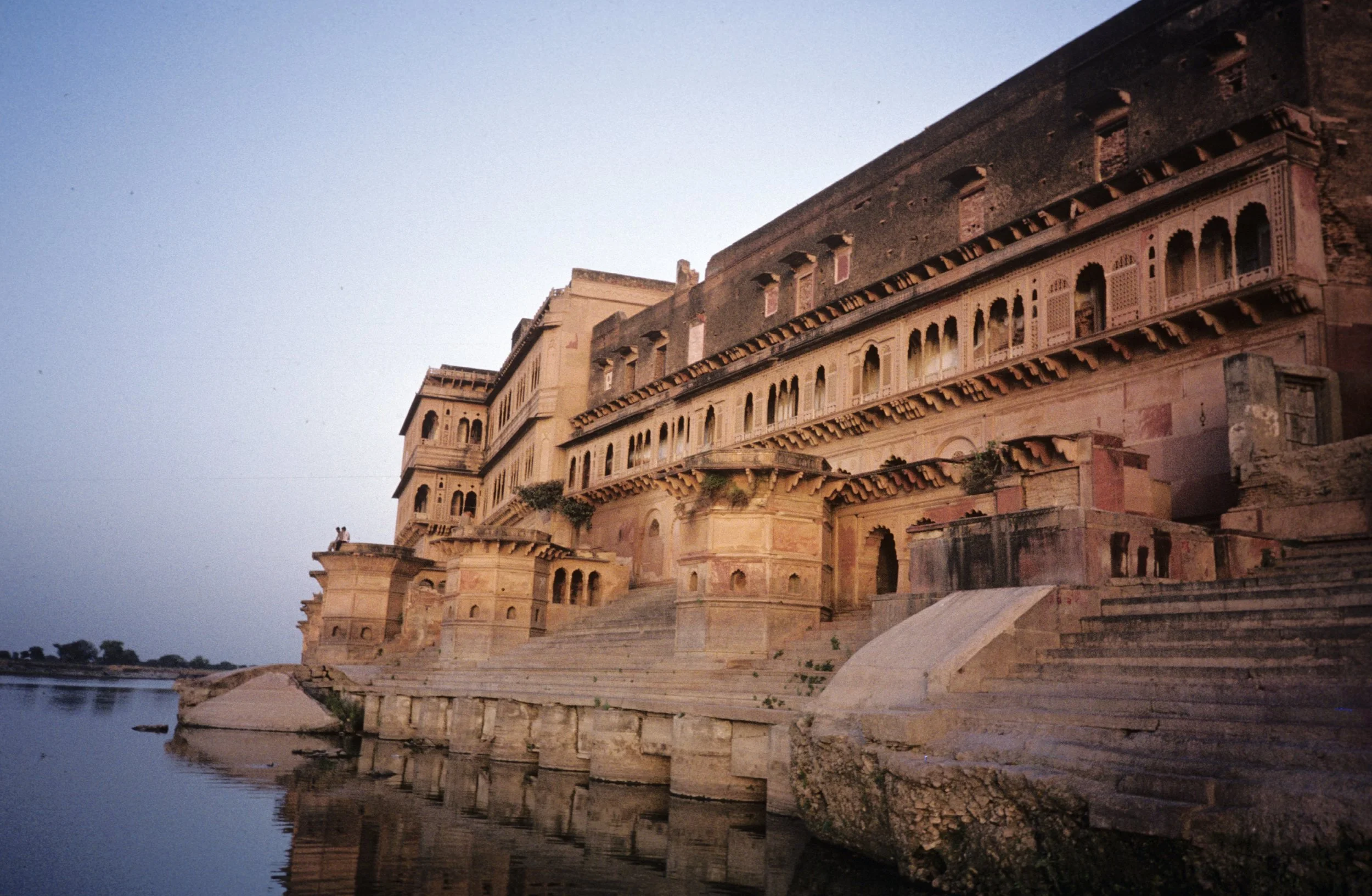Pandavali Kunja
Pilgrims on parikrama near Keshi Ghat
The Vrindavan Center is located at Pandavali Kunja, Keshi Ghat, situated on the banks of the Yamuna River. Pandavali Kunja is an approximately 200 year-old red sandstone haveli and is located adjacent to the historical Yugala Kishora temple. Its red sandstone steps (ghats), which descend into the Yamuna River, are part of the daily pilgrimage path used by millions of pilgrims annually to circumambulate Vrindavan (parikrama). The ghats also serve as the location for the ceremonial Yamuna prayer (arati), traditional rites of passage (sraddha), and cultural events.
Ceremonial Yamuna arati
Pandavali Kunja consists of four galleries with over 20 different rooms ornamented with beautifully hand-carved sandstone facades, balconies, a large roof top terrace, a basement, a traditional ceremonial courtyard, and six staircases going down to a terrace where two large rooms are also located. Pandavali Kunja is situated between the Yugala Kishora Temple and Lakshmi Rani Kunj, which comprises the other half of Keshi Ghat. Pandavali Kunja is a historical landmark in Vrindavan and provides a rare, beautiful, and peaceful setting for the Vrindavan Center.
Devotees participate in a ceremony within the courtyard of Pandavali Kunja
Keshi Ghat, where Pandavali Kunja is situated, was originally constructed in 1760 by Lakshmi, Queen of Bharatpur and wife of King Surajmal. The building next to Pandavali Kunja is therefore named Laksmi Rani Kunja, or the “Garden of Queen Lakshmi”. Building summer palaces for pilgrimages to Vrindavan was often practiced by kings from the various states of India. In 1995, the property was acquired by the Prabhupada Bhakti Siddhanta World Mission Trust with the aim of creating a legacy project that would serve the local and international community by providing unique access to this sacred land. Over the past two years the building has been undergoing major renovation work to prepare it to house the Vrindavan Center.
Pandavali Kunja courtyard





